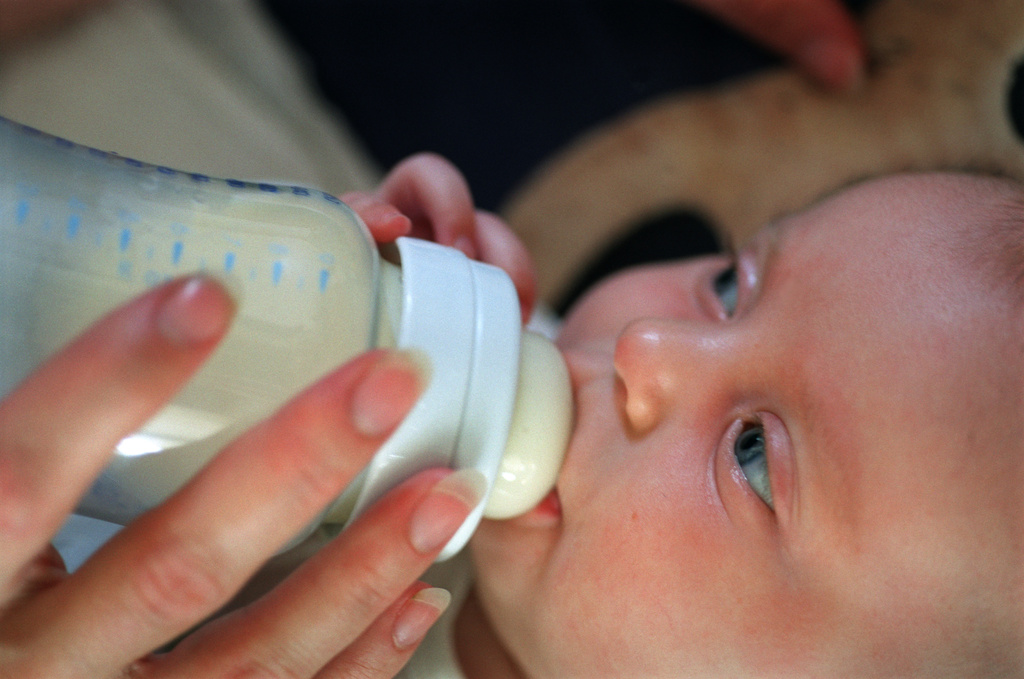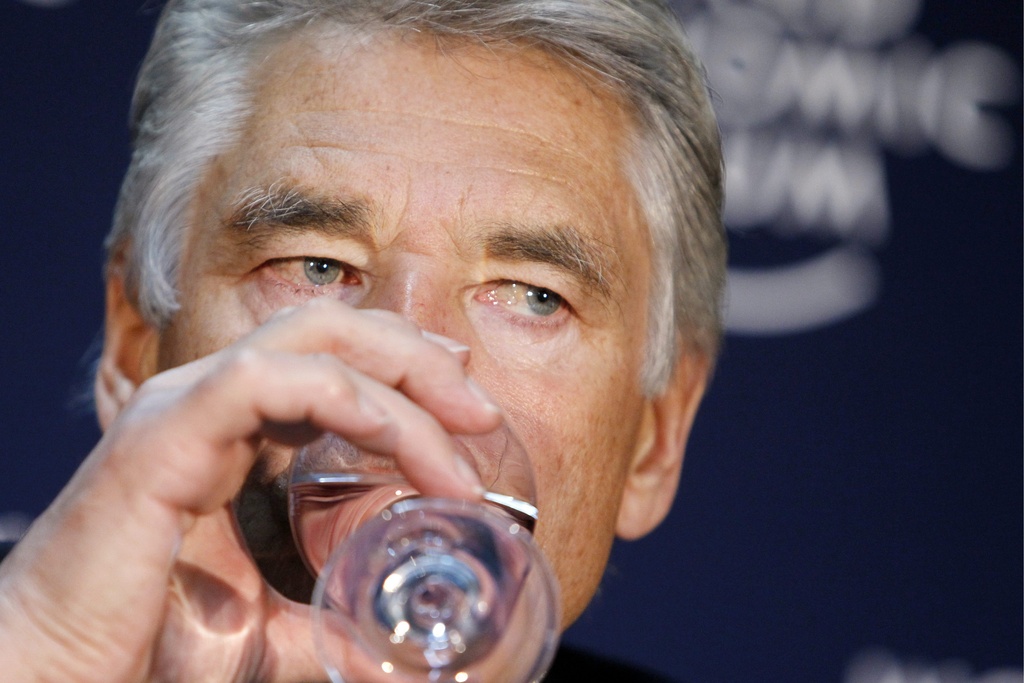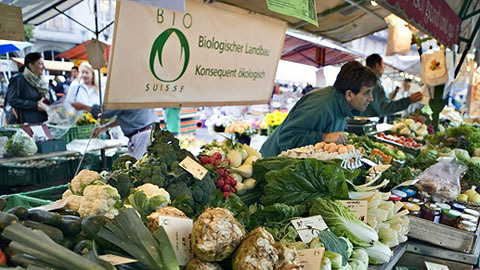Bottle-fed babies exposed to disruptive chemical

Babies fed using certain plastic bottles are exposed to higher quantities of the controversial chemical bisphenol A (BPA) than any other age group, a Swiss study has found.
BPA can mimic the body’s own hormones, and some scientists believe it can adversely affect a person’s health. But how much is required to achieve this effect is still being debated.
The researchers from Zurich’s Federal Institute of Technology say the estimated levels are well below the tolerable daily intake currently set by European authorities. But they also claim that not enough is known about the long-term effects of exposure to BPA.
Bisphenol A is found in polycarbonates, a type of clear plastic used to make products ranging from drinking bottles to compact discs, and which is also a component of the lining of food cans.
It’s been linked, although not definitively, to obesity, cancer, thyroid problems and genital aberrations, among other things.
“The findings are important in that BPA is thought to impact human development and is classified as an endocrine disrupting chemical, potentially putting developing infants at risk,” the authors of the study wrote.
Drawing on studies of how much of the chemical lurks in the bottles and comparing it with levels found in canned food, air, dust and other sources, the Swiss specialists said the main intake of BPA was through their food.
“We took the source data and then multiplied it by the intake of particular foods. For example for tinned tomatoes we took the concentration of BPA in the cans and multiplied it by the normal intake per person,” said lead author Natalie von Götz.
Higher intake
What they found was that babies under six months had the highest levels of BPA exposure, a result that was not a total surprise.
“It is often seen that chemicals are found at higher levels in infants and small children because they have a higher intake compared to their body weight but I would not have thought that the difference would be so high,” von Götz told swissinfo.ch.
But how alarming are these figures? The European Food Safety Authority’s (EFSA) recommended limit for BPA is 50 micrograms per kilogram of body weight per day, the same as that set by the United States Environmental Protection Agency.
The estimated daily exposure of infants calculated by the Zurich researchers was only 0.8 micrograms per day. But von Götz argues that the limit may have been set too high.
“Many different toxicological studies were assessed when the limit was derived but the hormonal studies are very difficult to interpret and for this and other reasons they were not taken into account [by the EFSA],” she added.
No proof
The Swiss authorities have followed the lead of the European specialists, sticking with the 50 microgram limit.
“We are sticking with our position that the EFSA estimation is correct,” said Otmar Zoller of the Federal Health Office. “There is no proof so far of long-term effects on children.”
Canada has adopted a much more cautious approach and has sought to restrict imports of plastic polycarbonate bottles for babies after the country’s health agency classified BPA as toxic to human health and the environment in 2008. Switzerland does not plan to follow suit though.
“It would be an abuse of the principle of precaution,” Zoller told swissinfo.ch. “It would make no sense since we don’t have the data to back up such a decision.”
However, the health office has advised consumers who wish to reduce their children’s intake of BPA can switch to glass bottles.
Discrepancies
A large number of publications on the toxicity and the effects on hormones of BPA in animals have been published.
According to the World Health Organization (WHO) “there have been considerable discrepancies in outcomes among these studies, both with respect to the nature of the effects observed and, where reported, the levels at which they occur”.
This has led to controversy about the safety of BPA among scientists.
In an effort to address the problem the WHO, along with the United Nations Food and Agriculture Organization (FAO) will hold an expert meeting to review toxicological and health aspects of BPA in Canada later this year.
But even if the review led to a global ban, the problem would not go away at a single stroke warns Zoller.
“It would probably take 20 years to get it off the market, and even longer for it to disappear from the environment,” he said.
Clare O’Dea, swissinfo.ch
BPA-free brands of plastic baby bottles are available.
Otherwise do not use the same water that was used to sterilise the bottles to mix with formula.
Also wait for boiled water to cool before using it to mix formula.
Source: Swiss Federal Health Office
This chemical is a monomer (the smallest part of a polymer) used in the plastics industry for the production of polycarbonate plastics. It is often found in packaging material.
BPA is the central building block for polycarbonate plastics and epoxy resins.
It is found in countless everyday objects such as medical implements, baby bottles and food packaging, as well as in the lining of water pipes.
Some three million tonnes are produced worldwide every year.
Apart from ingesting the chemical through food, BPA is also transmitted to the body through air, water and even some dental materials.

In compliance with the JTI standards
More: SWI swissinfo.ch certified by the Journalism Trust Initiative





You can find an overview of ongoing debates with our journalists here. Please join us!
If you want to start a conversation about a topic raised in this article or want to report factual errors, email us at english@swissinfo.ch.